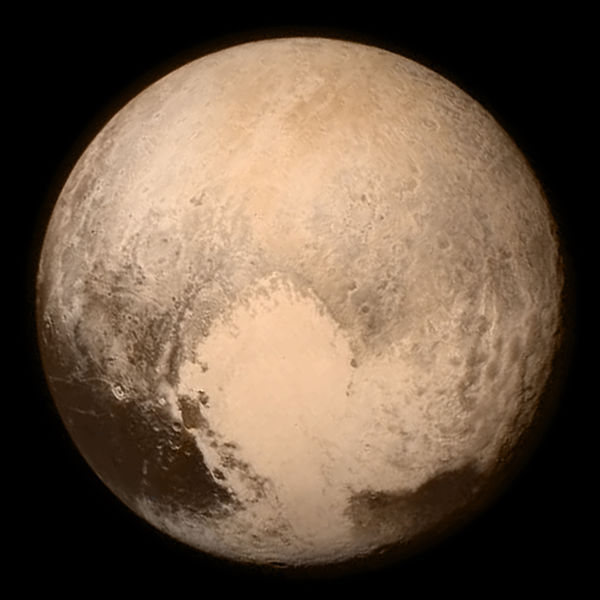Since 1930, Pluto was known as the ninth planet of our Solar System. Everything was just peachy...until in 2006, when scientists made a big announcement: Pluto wasn't a planet! Suddenly we were down to only eight, while poor Pluto was now known as a "dwarf planet".
Lesser worlds might have been dismayed, but Pluto kept its chin up, knowing that one day humans would be back to thinking it was fabulous.
And you know what? It was right! All it took was us getting the chance to see its beauty up close.
New Horizons expands our horizons
NASA launched New Horizons on January 19, 2006. (Getty Embed)
In a funny twist of fate, the same year that Pluto was being officially reclassified as a dwarf planet, NASA launched a probe. The probe was called New Horizons, and it was headed Pluto's way. New Horizons' journey took nine years and travelled five billion kilometres (three billion miles), but when it arrived in July 2015, scientists were blown away.
Finally, we could see how complex the surface of the dwarf planet was. It had mountains, craters, and a huge beautiful white plain now known as its "heart". Here's the best image that we had on Pluto before New Horizons (on the left), compared with what they saw in 2015.

(NASA/ESA/A. Stern and M. Buie: left image; NASA/JHUAPL/SWRI: right image)
Amazing, right?
One step further
The original pictures taken by New Horizons were black and white. But over the last year or so, NASA has been colouring these images using spectroscopic data (this is a way to read colours based on the radiation an object sends out). And now, they've placed over 100 of these images together into a short video. The video simulates what it might look like to approach and land on Pluto.
It begins with Pluto and its moon, Charon, in the distance. As we get closer, the dwarf planet comes to life and we see more colours and more features on its surface. Check it out now!
And even better? New Horizons is now on its way to 2014 MU69, an object in the Kuiper Belt. The Kuiper Belt is a giant asteroid belt outside the orbit of Neptune. This is the farthest region of our Solar System (wow!). New Horizons won't reach 2014 MU69 until 2019. But while we wait, we'll just thank the probe for bringing us closer to an old friend.
Welcome back, Pluto!
 This image of Pluto (and over 100 others) has been strung together to create a video of a landing on the planet. (Courtesy of NASA/Wikimedia Commons)
This image of Pluto (and over 100 others) has been strung together to create a video of a landing on the planet. (Courtesy of NASA/Wikimedia Commons)









